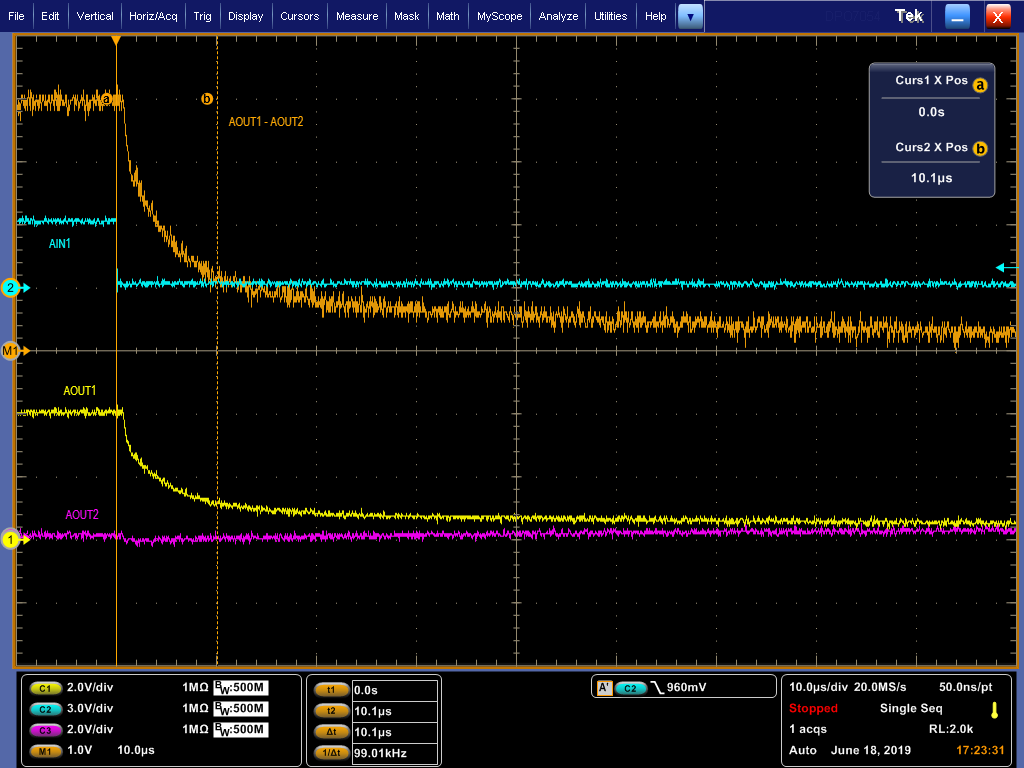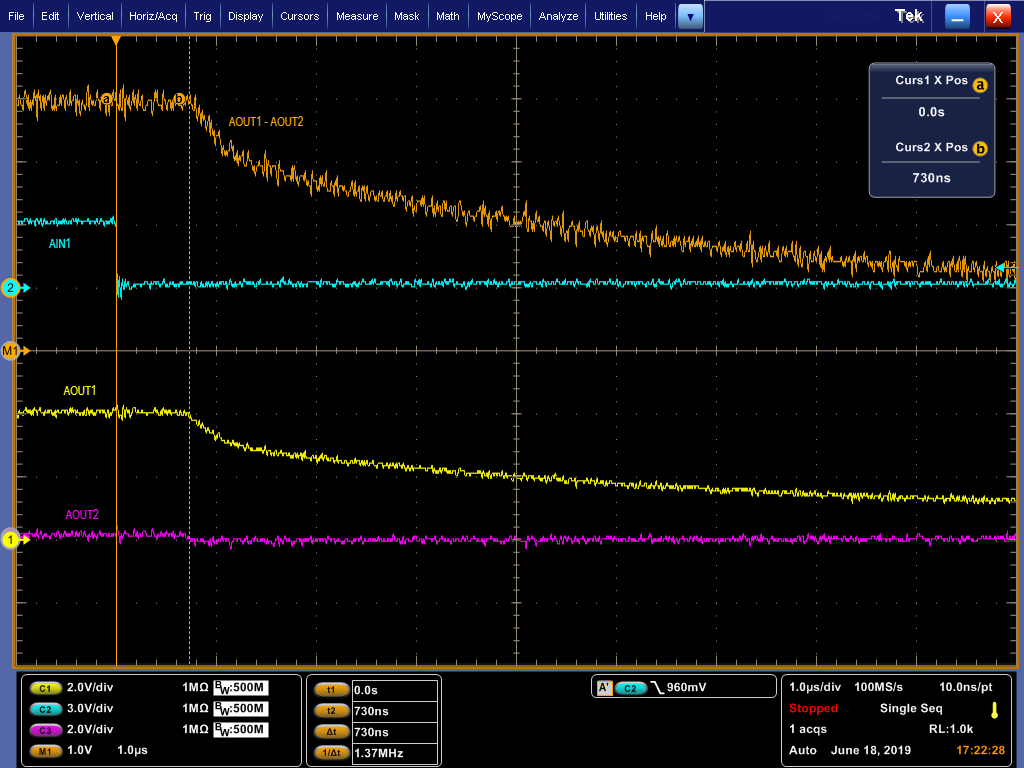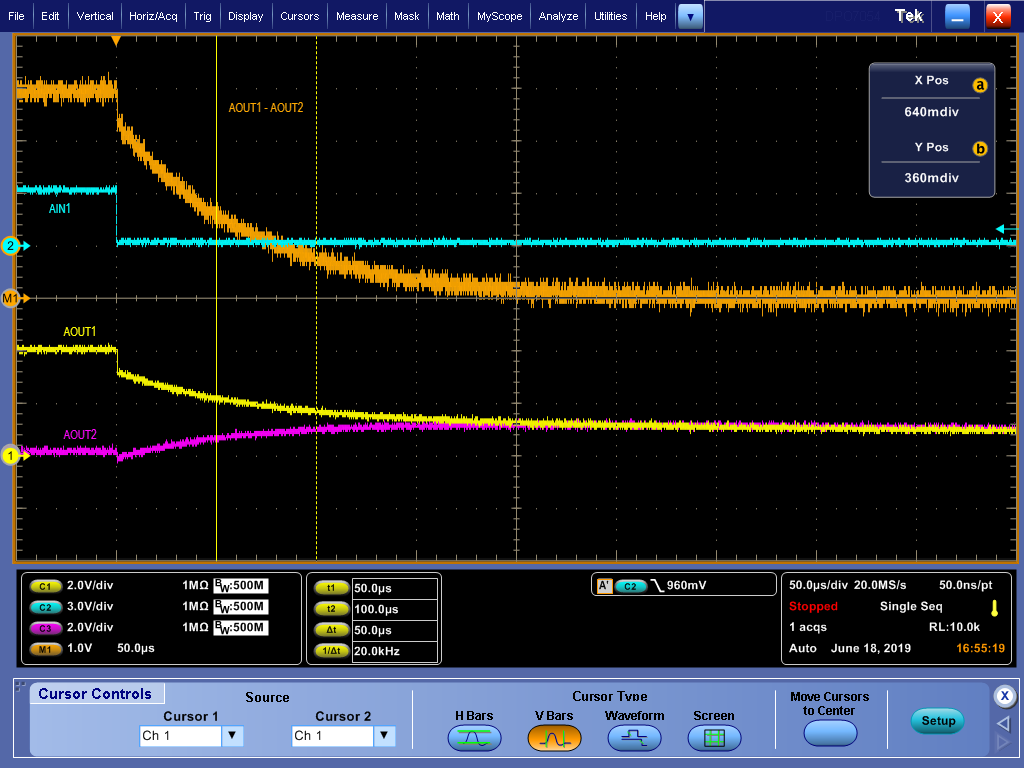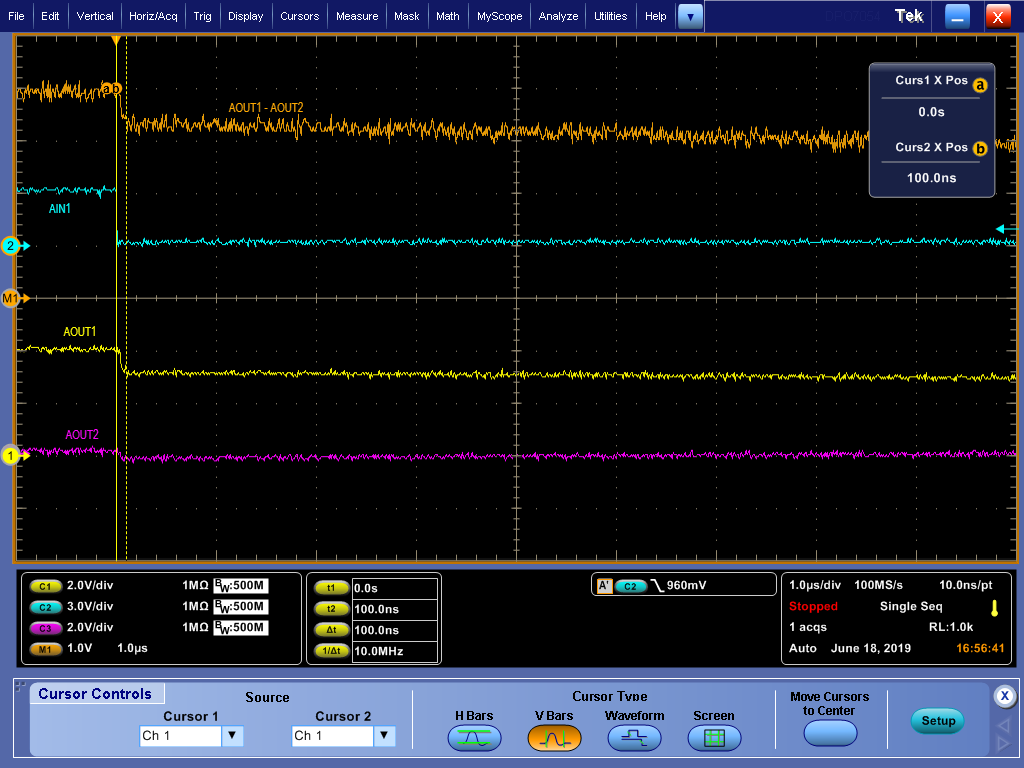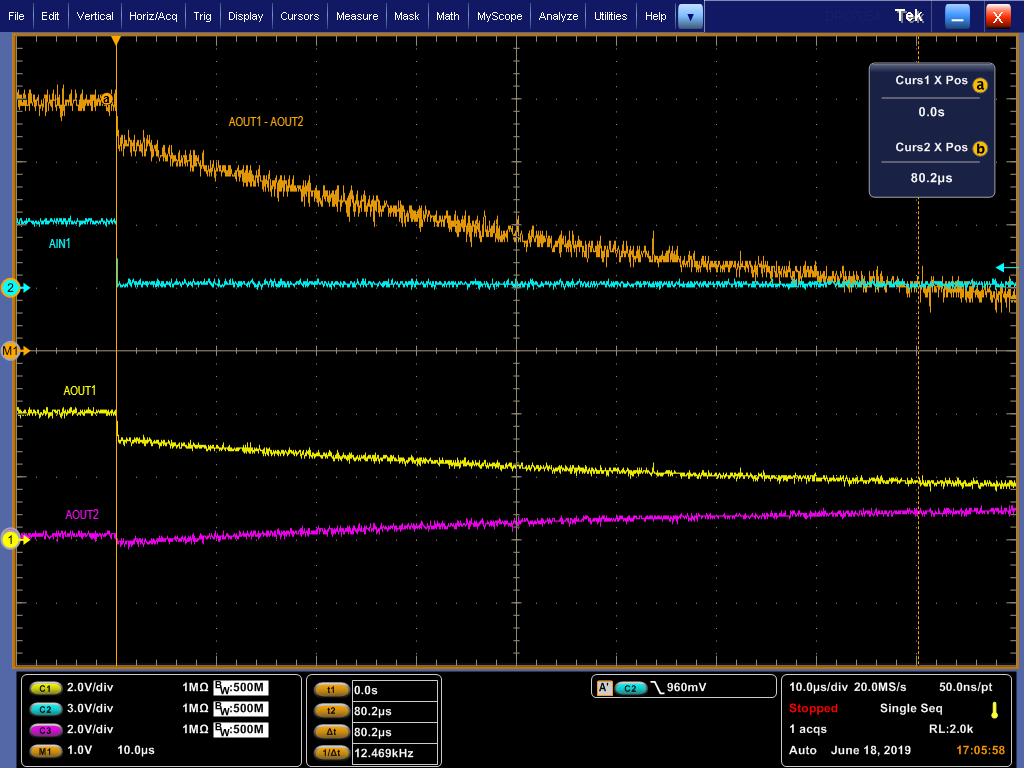Hi,
I am using DRV8833 as LED switching using PWM. My test input is PWM which runs with 20% duty cycle and 250hz to 1khz. I used this pulse as an input-1 for DRV8833. Then the output-1 shows the pulse same as the input.
I changed DRV8833 to DRV8836 due to the size issue. Then, the output of DRV8836 is different, which means the falling time is too slow. What is the difference between?
I couldn't see any difference between them in the datasheet. I used DRV8836EVM and DRV8833polu.
I attach the wave here. The top is the DRV8833 output1 and the bottom is the DRV8836 output1. Both uses the same input file, which is similar to DRV8833 output1.
Thanks for your feedback.


